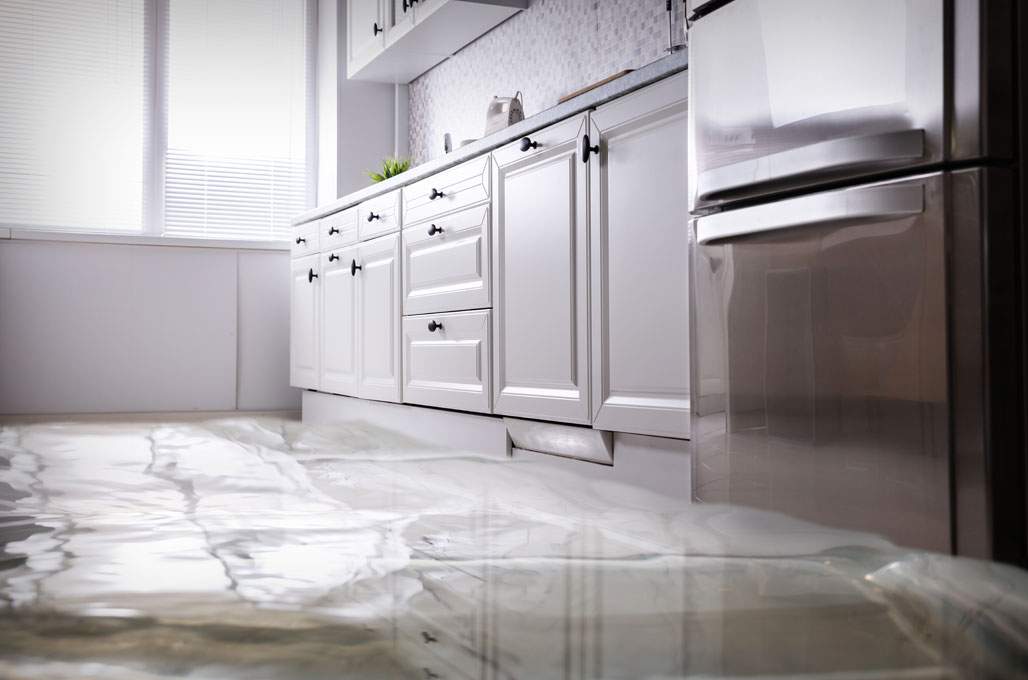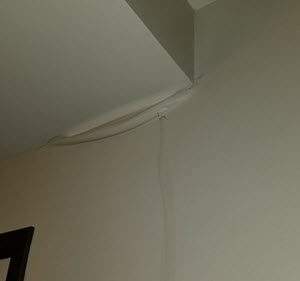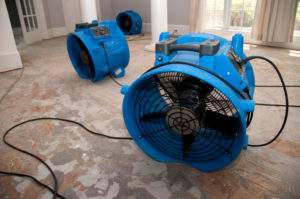What is Ceiling Water Damage?

Picture it… a major storm passes through and the rain comes down hard. Suddenly water is dripping from the ceiling. You scramble to find a pan or a pail or a bucket to collect the water as it drips from the ceiling. Or perhaps you notice some discoloration on your ceiling and wonder about what lies behind the plaster. Ceiling water damage is definitely one of those situations that needs to be investigated and resolved.
Experiencing an active water damage emergency? Check out our Water Damage Emergency Action Guide.
Unfortunately – whether ignored, avoided or overlooked – mold and mildew are likely to grow, and the structure itself will weaken over time. You may even end up with a collapsed ceiling and a LOT of property damage. So it’s important to know how to identify ceiling water damage, and know what to do once you’ve found it.
Is it Water Damage?
Identifying water damage in your ceiling is usually pretty straightforward. It can be painfully obvious once it reaches a certain stage, but it is good to know all of the signs to be on the look out for. Other than the obvious water leaking from your ceiling, some things to watch out for include:
- Slightly discolored spots — usually copper, yellow, or brown
- Peeling, cracking, or bubbling wall surfaces
- Discolored growths
- Odors indicative of mold or mildew
- Stains on ceiling
- Sagging ceiling
- Bulging drywall

Where is the Water Coming From?
One thing is for sure — the water is coming from somewhere, and you need to find out where. If the impacted ceiling is on the top floor of your home, the roof is the most likely culprit. On the other hand, if you’re dealing with water damage to a ceiling with rooms above it, you need to look at that room or internal plumbing.
What if water is leaking from roof?
There are two main culprits when it comes to water coming in from your roof — the quality of the roof, and the state of the gutters. If you’ve recently lost shingles in a storm, a skylight or you have a roof that’s aging and needs some TLC (or to be retired completely), repairing the roof will be the path to follow. It is possible that your roof is just fine, and water is draining from your gutters into your home because they are clogged and the water has nowhere else to go.
What if water is leaking from room above?
There are a few possibilities when you’re experiencing a leak in a room beneath other parts of your home. If the bathroom is above the room in question, you may be dealing with poor or worn out waterproofing, and might just be getting spillover from a damp floor.
In the bathroom and other rooms, a leaky pipe could be to blame. If the pipe wasn’t properly or securely installed, has worn out with age, has been punctured by a nail, or has burst because of freezing, your pipe will need to be replaced or repaired.
Also consider whether there are any major appliances above the ceiling in question. An old refrigerator or washing machine may be leaking and need to be looked at by a technician.
What steps should I take when I have ceiling water damage?
Stop the Source of the Water
Once you’ve identified the source, do what you can to stop the influx of new water.
If the water is coming from an appliance, don’t use that appliance. You might need to turn off the water to the appliance completely. Or maybe turn off the water main to stop the source of the water. Safety first, though! Water and electricity do not mix. If there is water pooled around the appliance, you may need to unplug the appliance (if you can do so safely).
For leaky pipes, turn off the water source to the pipe until it can be repaired. If the water seems to be coming from a poorly waterproofed bathroom, refrain from using that bathroom, or lay down plenty of towels if you need to take a shower or do anything else that might cause water to seep through the floor.
Unfortunately, for a leaky roof, there isn’t much that can be done to stop the water flow itself — you’ll just have to take precautionary measures, such as moving valuables and furniture from beneath the leak, until it’s repaired.
Repair the Leak
Next, repair the leak. You may be able to take care of this on your own, if you’re handy with that sort of thing. Most of us will need to call in a professional. Take care that whatever is causing the leak gets repaired properly or you’ll just be dealing with this problem again. Skipping to drying everything out without repairing the leak and then going about your business as usual is only a temporary solution.
Dry Everything Out

Remove materials that have been damaged, such as discolored materials, anything containing mold or mildew, and damaged drywall. Be careful not to cut through any electrical wires. This is the most dangerous part of this process, and one reason you may choose to reach out to a professional to take care of this step.
Use one or two industrial drying fans to fully dry out the areas above and below the damage. Make sure to get everything completely dry. You might want to turn down the thermostat, too. Warm air holds more moisture than cool air. The cooler the temperature, the faster it will dry. Wait a couple of days, and check to see if it is really dry or whether any new water has accumulated. It might mean that your leak repair failed or that you did not completely dry the impacted materials.
It is a good idea to bring in professionals when removing and drying out materials if you have more than one inch of standing water or if water is “dirty”, as they can assess the extent of the damage, contamination and make sure everything is taken care of properly.
Repair the Ceiling
For this final step, you’ll likely need to bring in a qualified company to repair and replace the ceiling, and any wall that had to be removed. It’s important to bring in someone to get it back up to code, including making sure it has proper insulation and is structurally secure. Your insurance may cover some of these expenses, so make sure to keep proper records.
Water damage to your ceiling isn’t something that should be ignored. If you are worried about ceiling water damage, call us today for a free consultation.
